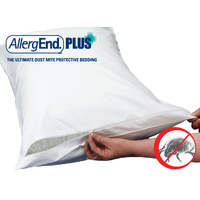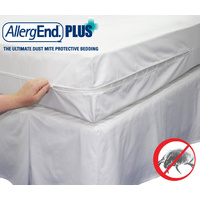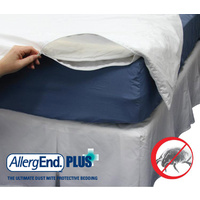Unbelievable! The bedding protection made an immediate difference - less sneezing & reduced swelling under the eyes. I have highly recommended it to friends.
K. Girdler, Avalon Beach, NSW
So far has significantly improved my 15 month old daughter's sleeping - previously coughed and woke regularly (3-4 times) a night.
G. Pither, Willoughby, NSW
Super fast delivery. Noticed improvement within a week, our son’s eczema is really clearing up.
L. Kauffmann Blaxland, NSW
My daughter used to constantly sneeze in the mornings but now she doesn’t sneeze at all and I consider myself to be a very clean freak. The covers have definitely made a difference.
C. Murry, Agnes Water, QLD
Matthew has suffered for 3 years with eczema and I never really believed dust mites could be the problem until we put the protectors on his mattress and pillow - WOW! What a difference. I feel terrible I did not do it sooner. Message to any parent who has been told their child's eczema will improve if dust mites are eliminated/minimised - Believe it! and act TODAY! Thanks
N. Williams, Ashbury, NSW
Great product.. My daughter’s eczema improved drastically after sleeping on this product. Peace of mind for both myself and my husband. She sleeps better and we all have a better nights rest. A very happy returning customer.
A. Canny, Bayswater, VIC
Excellent response to my order, ordered on the net one day, on the bed the next! Well done!
A. Saccardo, Rosslyn Park, SA
My son suffers from chronic hay-fever & has a dust mite allergy – he only had your products for a fortnight and they seem to have helped tremendously – wish I’d got them earlier!!
Mrs L. Russell, Mt Eliza, VIC
Our daughter suffers from severe eczema and until fitting Allergend Plus hadnt slept right through the night. What a saviour this product is. Our whole family is better for it.
Mr. R Sinclair-Smith, Narrabundah, ACT
After many sleepless nights spent sneezing, coughing & scratching, the change was almost immediate with no more rhinitis & eczema clearing shortly afterwards. Thanks so much!
J. Jennings, Little Mountain, QLQ
Quality product, well made, efficient customer service, will recommend products to family and friends.
Mr R. Caithness, Gladstone Park, VIC
I suffer from Rhinitis and have put up with the pain and headaches for 15 years.
The pain was gone the first night I used Allergend. Thank you
Ms K. Chilcot, Montana, TAS
.jpg)

 Overnight
Overnight




